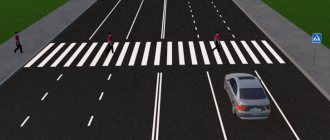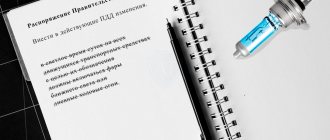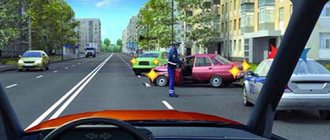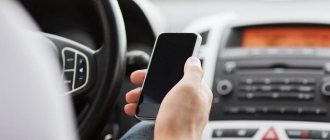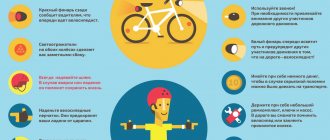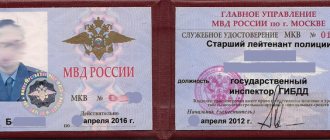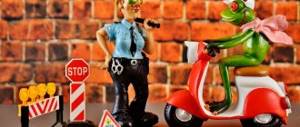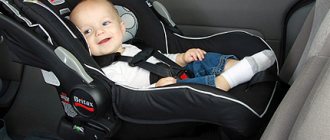HomeArticlesReflectors for pedestrians: desire or obligation?
The roadway is a place of increased danger, despite the installation of road signs. Therefore, all road users must observe the necessary safety measures. Statistics show that every second emergency situation on city roads is a collision with pedestrians. Since a greater number of such incidents occur in conditions of insufficient lighting, the presence of reflective elements is mandatory, which is enshrined in the law of the Russian Federation dated July 1, 2015.
Reflective elements (RE) are capable of refracting light fluxes incident on them. This feature of the SE allows the driver to improve the view of the road and respond in a timely manner to an obstacle on it. When the light flux hits the solar cell, the reflected beam is directed to the headlights of the vehicle and ensures the visibility of the pedestrian even in unfavorable conditions (darkness, fog, rain).
When using clothing with reflective materials or other elements with such properties, the risk of accidents involving pedestrians is significantly reduced. Thus, the use of SE allows the driver to notice people walking along the roadway (and sometimes pets) already at a distance of 200 meters with low beam headlights, and at a distance of 350 meters with high beam headlights. This will allow you to reduce your speed and safely avoid an emergency. Also, in the dark, noticeable LED road signs and reflectors have a positive effect on the situation on the road.
Types of reflective elements
Depending on the reflection angle, SEs can be:
- Wide angle (more efficient).
- Narrow angle.
For solar cells to perform their function, light must fall on them at an optimal angle of incidence (40 degrees) or close to it. To increase the likelihood of effective operation of SEs, it is necessary to distribute them over different parts of the body (arms, back, legs) so that they are as clearly visible to the driver as possible.
The shape of reflective elements is available in the form:
- Stripes (sewn onto clothes or glued with an iron).
- Key rings and pendants (hang on backpacks, satchels, bags).
- Thermal stickers or adhesive stickers.
- Badges (attached to clothing).
Stickers, patches and other similar elements should be applied to visible places so that they are anatomically located on parts of the body.
If you do not have similar options for reflective accessories and clothing with sewn-in reflectors on hand, you can provide protection by applying spray paint with a light reflection effect.
Special glass lenses or reflective surfaces in the manufacture of SCs increase their efficiency due to guaranteed good refractive properties.
You can wear bright yellow vests with sewn reflectors. The presence of such vests is especially important for drivers. When going out on the highway at night, they also become pedestrians and are at risk.
The best colors for reflective stripes and other devices used for these purposes are: white, light gray and bright yellow-green (lemon). Outerwear in light colors will also increase a person's visibility on the roadway.
There are elements with built-in LEDs or light bulbs. They glow on their own, without the need for light rays to hit them. There are also options with special coatings (for example, phosphorus-containing), which allows them to be used for signal in the dark.
In the absence of alternative solutions, battery-powered flashlights can be used to ensure pedestrian safety. They should be carried in such a way that they are clearly visible to the driver, but they do not blind him.
Attention! Laser elements are strictly prohibited, as they can blind the driver and cause a traffic accident.
GOST R 12.4.219-99 regulates the quality of materials for reflectors.
What are reflective elements
Reflective products are items of clothing or accessories made from a special material, having a light shade and a high rate of reflection of rays falling on their surface. In their manufacture, a special material such as plastic is used, which has a ribbed surface and has the property of fluorescence.
The optimal angle of incidence at which structural elements provide the best parameters for reflecting the light flux is considered to be 40°. The basis of the product can be microscopic balls with lenses, plane-prismatic or spherical reflectors applied to the material.
Note! Reflection angle specialists distinguish narrow-angle products, whose reflection angle is 25°, and more efficient wide-angle designs, for which this parameter is 50°.
The finished product is fixed on the surface of a dense but light fabric.
Reflective elements for pedestrians may have:
- citric;
- light green;
- white;
- light gray color.
What types of reflective elements are there on clothing?
These shades provide the greatest reflection of the rays falling on them when illuminated by car headlights in the dark. It is practiced to manufacture reflective elements (REE) from a material that has an orange and red tint.
Important! It should be remembered that if the reflectance coefficient for products in light colors is 100%, decreasing as the color darkens, then for products made from red material it is only 40%. This significantly reduces the visibility of the object to the driver, increasing the potential risk to the pedestrian.
Since such products are purchased in large quantities by parents to ensure the safety of their babies, we emphasize once again that when choosing protective items with ESR, you should prefer the shades listed above, which are more noticeable on the baby’s clothing.
How many reflectors should there be and their location
There are standards for the number of SEs. GOST R 51835-2001 regulates their locations.
Elements that reflect light are arranged as follows:
- On the legs (legs) horizontally in the lower or middle part, or vertically on the outside.
- On the arms (sleeves) along the outer line of the shoulder and/or forearm, across the upper or lower third.
- On the back horizontally along the lower and upper parts, or along the shoulder line down parallel to each other or in a V-shape.
- In front along the chest line or under it, or vertically from the shoulder line to the bottom.
- On the body in the form of suspenders.
It is advisable that SEs be on hats, bags, backpacks, knapsacks, gloves, and shoes. It’s good when there are several elements in different places. If there is only one reflector, then it must be of sufficient size (at least a quarter of square meters according to GOST) and located on the headdress or chest. This will increase the likelihood that the driver will notice a person on the road. But it is better to have two or more reflective elements. Such protection turns out to be reliable in practice, capable of identifying a pedestrian.
Bicycles, scooters, strollers, and wheelbarrows must also be equipped with an electric vehicle. Adhesive tape with a reflective coating is suitable for this. It is necessary to paste it over the pedestrian’s vehicle so that its dimensions are clear. Persons riding a bicycle or scooter on a road, its edge or shoulder should wear appropriate reflective equipment. Or you need to use any available methods of applying SE to clothing (in the form of patches or stickers), and also use flickers (for example, bracelets, key chains). You can wear a vest with SE.
If appropriate special sleeves are used as reflective elements, they should be worn so that they are clearly visible to vehicle drivers, provided the headlights are on, at a distance of up to four hundred meters.
When moving along the roadway with a pet (this is especially true when a pedestrian is walking with a dog or cat), you need to put on a leash, harness, overalls or any possible cape with reflectors.
Cases of mandatory application
Reflectors are mandatory for pedestrians in the dark, in fog, rain, or snow outside a populated area . At the same time, it is not for nothing that the traffic police recommends that everyone in the city have flickers. If a pedestrian suddenly appears on the road, his life and health directly depend on the meters remaining to the hood and the driver’s reaction. Here are some approximate numbers :
| Vehicle speed, km/h | Approximate braking distance, m | ||
| dry | rain | snow, ice | |
| 40 | 15-20 | 20-30 | 50-100 |
| 60 | 35 | 50-70 | 70-130 |
| 80 | 50-70 | 70-140 | 100-250 |
If a pedestrian at night sees headlights from afar, then he only comes into the driver’s visibility zone at a distance of 30 m.
The braking length is shown in the table above. And the reflective element will notify the driver that there is a pedestrian on the road, 150 meters away, and with high beams - 400 meters away.
For the sake of children's safety, clothes and briefcases are equipped with bright inserts and key chains. Kids love extra accessories. Such measures are especially relevant when a child walks down the street in the evening unaccompanied by adults.
Children on the road
The safety of children should be given special attention. Introducing children to the rules of the road is the direct responsibility of adults. It is necessary to ensure the protection of the child in all available ways.
For children, you should purchase clothes, backpacks and satchels with sewn-in solar cells. If they are not available, you must use tape, bracelets, stickers, key rings and other devices with reflective coatings. Especially popular among kids and teenagers are bracelets (they look like a fashion accessory) and badges (any design can be applied to them).
It is necessary to instruct the child about the rules of behavior on the roadway. Children's educational institutions usually conduct classes on this topic.
For schoolchildren, GOST regulates certain sizes of reflective tape. It must be at least 5 centimeters wide and a total length of two meters.
Consultation “Reflective elements for children”
Ushakova Oksana Maksimovna
Consultation “Reflective elements for children”
Teaching traffic rules in kindergarten is a vital necessity, therefore various activities on traffic rules are always relevant in preschool educational institutions. In kindergarten, a child must learn the basic concepts of the traffic system and learn the most important rules of the road and learn the most important rules of behavior on the road. Traffic rules in kindergarten are a fairly large set of knowledge that teachers try to convey to children , because their safety on the road depends on it. Throughout the training, our educators address the topic of road safety. Especially for this purpose, the preschool educational institution holds various events, exhibitions, entertainment, and teaches traffic rules in direct educational activities. Our teachers use in educational activities a variety of paraphernalia of traffic rules for kindergarten: toy cars, buses, traffic lights , signs. In an interesting, exciting way, educators organize games based on invented stories that reflect various situations on the street, which helps children better master the knowledge and skills that are so necessary on the road. When a child comes to kindergarten, educational activities on traffic rules are of an introductory nature. Children become familiar with concepts such as “road”
,
“
traffic light ” ,
“pedestrian crossing”
, they are gradually beginning to study the types of vehicles.
Later, the circle of knowledge on road safety expands. Children will learn about traffic rules, the work of the driver and traffic police officer, and common road situations. Familiarity with road signs and traffic lights . All these activities gradually develop the child into a competent pedestrian, formulate norms of disciplined behavior children The main thing for children in learning traffic rules remains the example of adults - educators and parents.
Dear parents, remember that you too must follow the rules. Only in this case will training be effective. Remember that there are children nearby! Reflective elements on children's clothing
Pedestrians are the most vulnerable category of traffic participants. Last year alone, there were 72 thousand collisions with pedestrians in the country, which is more than a third of the total number of accidents. Every thirteenth person injured in a road accident is still a child. Therefore, parents should take additional safety measures. In those countries where the use of reflective clothing on children's clothing is mandatory, children's injuries on the roads have decreased by 6 to 8 times. This is a very important achievement; flicker is not just a shiny badge that makes a pedestrian noticeable. It creates a certain psychology that calls on a person to be careful. After all, even the color of clothing affects safety. It is very important for a pedestrian to be (visible)
.
And not all parents understand this when choosing (practical)
dark tones.
But this makes the pedestrian almost invisible, especially in cloudy weather, at dusk. And most vehicle collisions with pedestrians occur precisely because of the actions of such an invisible pedestrian; vehicle collisions or collisions with various obstacles occur. The use of reflectors (reflectors)
by pedestrians reduces the risk of a vehicle hitting a pedestrian in the dark by more than 6.5 times.
When driving with low beam headlights, the driver notices a pedestrian with a reflective element from a distance of 130 - 140 meters, when without it - at best, from a distance of 25 - 40 meters. When driving with high beams , it will detect a pedestrian at a distance of up to 400 meters.
Dear parents!
Let's protect the most precious thing we have in life - our children
Many manufacturers of children's clothing care not only about the beauty and convenience of their products, but also the safety of the young pedestrian, using reflective elements : patterns on jackets, insert stripes, etc. When choosing, give preference to these same models. In the absence of special clothing, it is necessary to purchase other forms of reflective elements , which can be placed on bags, jackets or other items. Sleds, strollers, and bicycles should be equipped with the same elements The shapes of the reflective elements are different . Signs and pendants are convenient because they can be easily moved from one garment to another. Self-adhesive stickers can be used on any surface (artificial leather, metal parts of bicycles, strollers, etc.)
and special
reflective bracelets . Teach yourself and your children to use available safety equipment.
When reflectors are required
According to amendments to the traffic rules dated July 1, 2015, reflective elements are mandatory for pedestrians in conditions of insufficient lighting (darkness) and poor visibility (fog, rain) when crossing and/or driving along the roadway, its edge or shoulder outside populated areas.
As for the movement of pedestrians in the dark along the road zone of populated areas, wearing clothing and items with reflectors is recommended.
There is no specific time period corresponding to the concept of “darkness”. But it is believed that this is the period from sunset to sunrise.
In terms of requirements, movement during fog and other weather conditions when visibility is insufficient is equal to this.
What is the reason for the large number of collisions with pedestrians?
In poor lighting, this figure is only 5% of what a driver can perceive during the day . This is especially aggravated in cases where the person in front is wearing dark clothes .
Many may argue that the situation can be improved by reducing the speed of vehicles. But it is not so! The driver has the opportunity to notice a person moving along the roadway at a distance of only 25 - 30 m .
Even at the minimum (60 km/h) vehicle speed, the vehicle may not have time to brake if the need arises. But there is an opportunity to solve this problem - the use of reflective elements for pedestrians.
Fines for violation of requirements
If a pedestrian does not comply with the indicated rules and does not use reflective elements during periods of insufficient visibility (darkness and fog) outside the territories of populated areas, a fine for violation of the requirements is imposed in the amount of 500 rubles. The same fine is imposed on the driver if he had to get out of the vehicle in poor visibility conditions.
Sometimes things that seem insignificant at first glance can save lives. This is exactly what reflective elements are. By following simple rules and basic requirements, you can ensure protection and minimize the risk of accidents on the roads.
